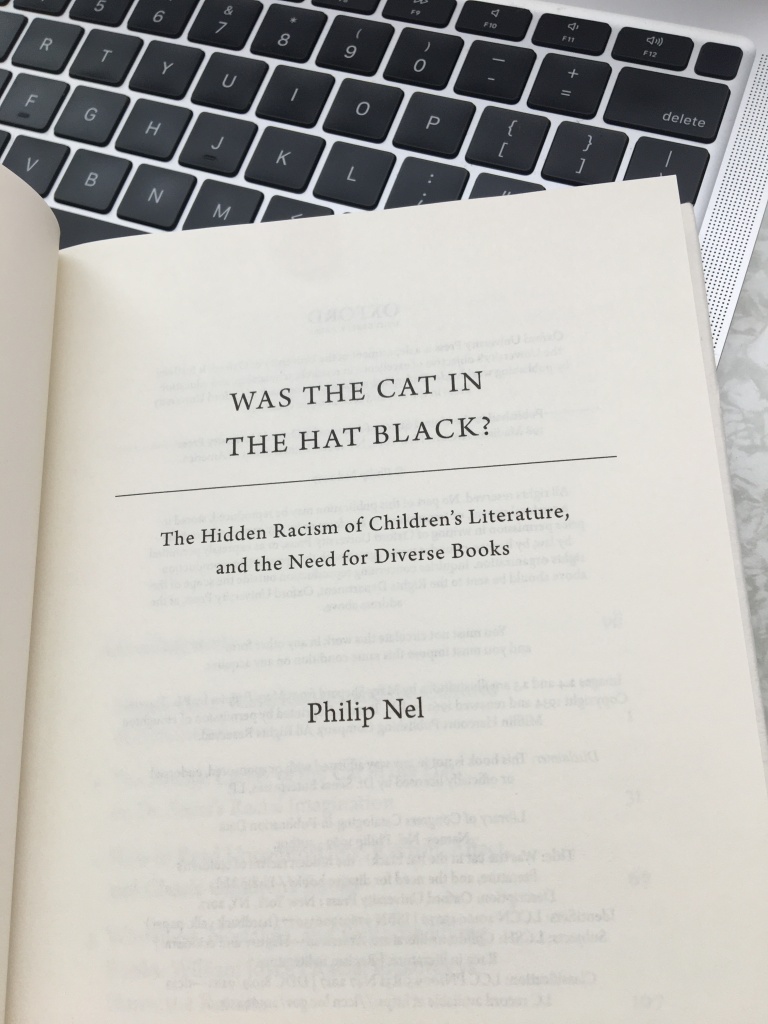
I love reading books about books. Was the Cat in the Hat Black? is a good example of that genre. It’s a reading of children’s books and their ongoing effect on readers. Philip Nel unearths some history surrounding Dr. Seuss himself as a frame for racism in the children’s book world. That ranges from overly white publishers and book characters to topics like censorship and inspiration. But the main actionable take away is to read with your kid, not just to shove books at them and expect to understand what’s going on. They need to be taught how to be a good critical reader.
Nel’s honesty about his situation and upbringing and stuff was great. His racist doll that he writes about in the intro is a good starting point. It was given to him as a child by a South African family member, and he didn’t even like it much. But he had it and absorbed something about it as a kid growing up in a white American town. That radical honesty is what’s needed. To censor, as he points out, is to lie. To hide. To be out of context. In a book like The Adventures of Huckleberry Finn, if you replace the n word with “slave”–now you sound like you’re just talking class, talking about being a good slave. Like what? No. Confront that language. See how it feels. Deal with it. And also read different stuff.
I definitely liked the chapter on the Cat in the Hat best. The credited inspiration is a black woman in white gloves with a curious smile–the person who worked the elevator Seuss got on with an editor who was talking about needing a book that kids can use to learn how to read. And that’s on top of the cartoon inspirations Seuss already had, some of which were characters based in blackface. Crazy thing about the Cat in the Hat (which you don’t really think about) is that he is black, with a white face. The inverse of the white actor with dark paint on his face. The Cat’s whimsical and disruptive ways connect to the performance of not just blackness in America but the white performance of blackness. To make fun with and of at the same time.
*Saw in the that he had a class with Eric Lott, who wrote Love & Theft. Makes sense.
Best line: Books containing stereotypes invite children to participate in that way of thinking, but children do not have to accept that invitation… affective relations can be critically effective ones. -Philip Nel
-Rachel Wagner
My blogs:
– Girtalk
– Read or Die
My books:
– Jacob’s Hip: Poems
– FEM: New Millennium Beauty & Fashion
– Abandonment Issues: Alive in New Jersey
– Back Like I Never Left: Dating as a Single Mother
My bookstore: Ten Dollar Books
Instagram: @tendollarbooks
Twitter: @tendollarbooks
FB: @tendollarbooks
[…] is another book about reading books (like Was the Cat in the Hat Black?). Here, Azar Nafisi is writing about her life as a professor in Iran. She’s at a university […]
LikeLike
[…] Reading Was the Cat in the Hat Black? […]
LikeLike
[…] Done with Was the Cat in the Hat Black? […]
LikeLike